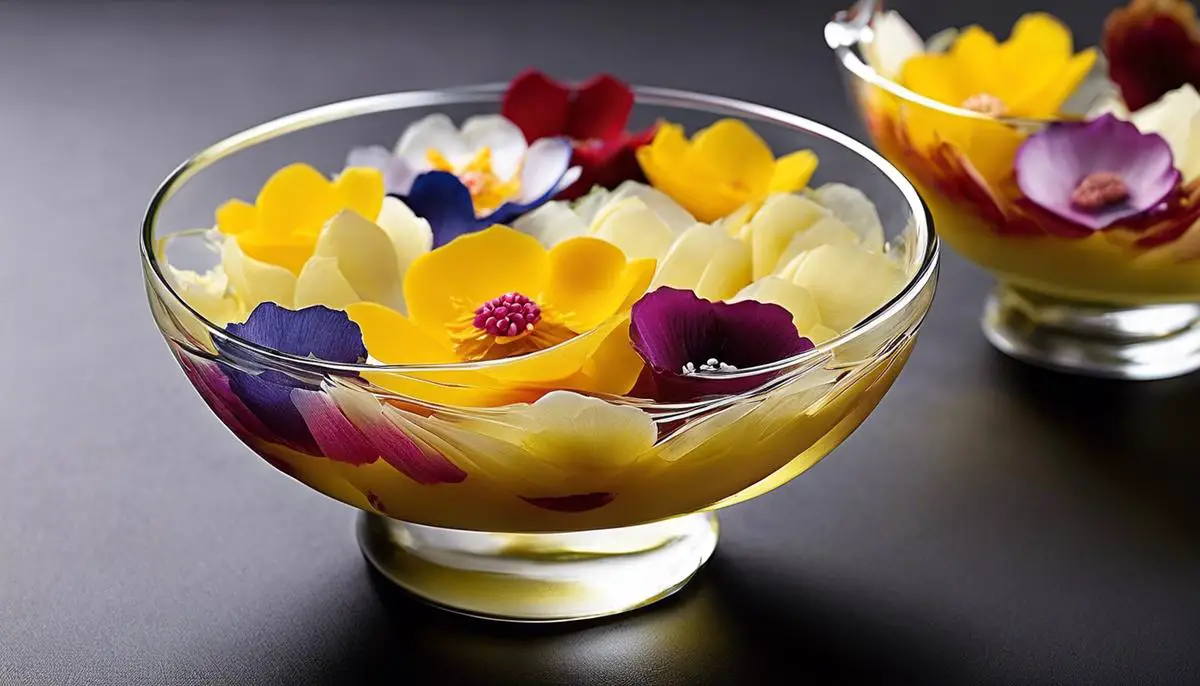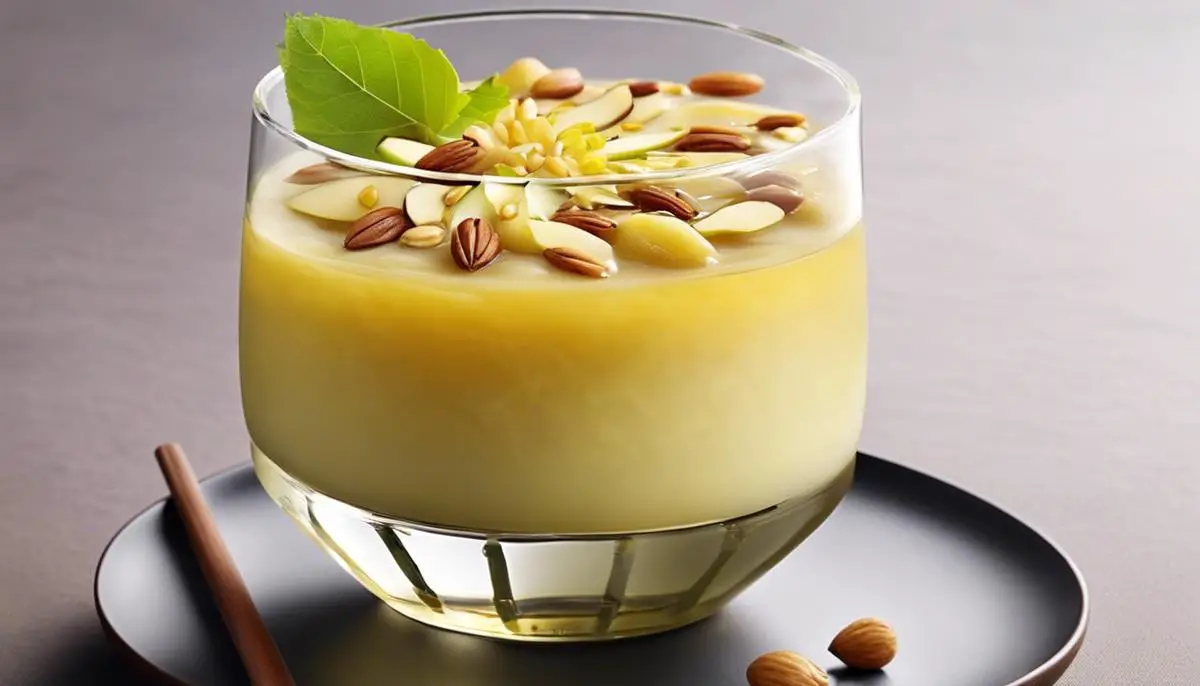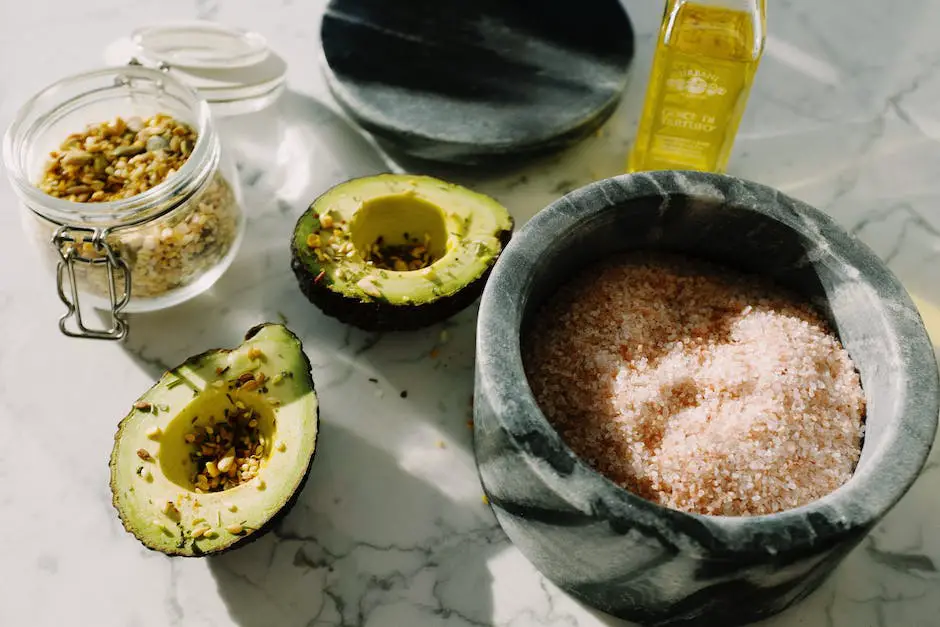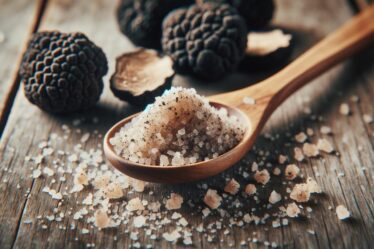
Coveted by the connoisseurs, welcoming to the uninitiated, the tantalizing Korean beverage Yuja-Hwachae takes center stage. This unique concoction, characterized by vibrant citrus notes balanced by delicate sweetness, represents centuries of Korean culinary and cultural heritage. Our exploration begins with a deep dive into the history of Yuja-Hwachae, understanding its evolution and persistent relevancy in modern Korean households and beyond. You’ll learn precisely how to assemble the picturesque array of ingredients, unlocking the secrets to this brightly flavored beverage. Culminate your knowledge with expert advice on food paring and a look into the surprising health benefits hidden within each delicious sip of Yuja-Hwachae.
History of Yuja-Hwachae
A Culinary Expedition: Tracing the Cultural Origins and Historical Significance of Yuja-Hwachae
Sprinkling the sensational spirit of sunshine onto your palate, Yuja-Hwachae’s vibrant and tantalizing flavors are a culinary embodiment of South Korea’s cultural richness and historical heritage. Yet, what are the cultural origins and historical significance of this delightful dish? With its luminescent hues and zesty undertones, how does Yuja-Hwachae hold such a significant place in Korean culinary history?
Hailing from a culinary tradition that considers balance and harmony as its essence, Yuja-Hwachae is a sublime Korean dessert that merges the sentient vibrancy of yuja (yuzu in Japanese), a citrus fruit native to East Asia, with the cool, palate-refreshing succulence of hwachae, a traditional Korean punch.
The legend of Yuja-Hwachae swirls around the resilient persona of yuja. The food history annals reveal that yuja, unlike other citrus fruits, could endure the harsh Korean winter and re-emerge in spring with its vibrant yellow allure. Korean monks in the late Goryeo Dynasty (918-1392) are said to have cultivated yuja in their temple gardens, using the fruit’s skin in medicinal treatments and its pulp in their diet. From the heartening yuja tea to the captivating Yuja-Hwachae, yuja’s multi-faceted presence is a testament to the fruit’s timeless charm and adaptability.
On the other hand, Hwachae is an old-age summer cooler swathed in Koreana. This chilled punch, traditionally prepared with fruits or edible flower petals, was a royal indulgence during the Joseon Dynasty (1392-1910). The cool, refreshing nature of Hwachae served as a counterbalance to the intense Korean summer and signified the Korean culinary doctrine of ‘Eum-Yang’, the balance between the dark (Eum) and the light (Yang).
When the sun-kissed zestiness of yuja collides with the composed cool of hwachae, the result is Yuja-Hwachae – a refreshing, citrusy dessert that paints a flavorful picture of Korea’s deep-rooted food philosophy.
But the grandeur of Yuja-Hwachae is not solely in its origins or flavor. The significance of Yuja-Hwachae is largely tied to the cultural and social fabric of Korean life. From royal banquets to local festive gatherings, Yuja-Hwachae often graces the tables, bringing people together and fortifying the bonds of community.
Today, the enthusiasm for Yuja-Hwachae has not just survived but thrived, flooding contemporary platforms like cooking shows, food blogs and even adapted to global fusion cuisines. Through this zesty, citrus delight, the culinary culture of Korea travels across borders, connecting people beyond geographical and cultural barriers. The story of Yuja-Hwachae testifies how food is not just a sensory experience but a beautiful instrument in immortalizing culture and fostering shared communities. So, the next time a spoonful of this citrusy-sweet sensation nurtures your senses, remember that you are relishing a slice of Korean history and culture!

Key Ingredients & Preparation
Yuja-Hwachae, a potent soul-quenching elixir, a multicultural ambassador of taste, bridging palates across borders and creating a symphony of culinary appreciation that knows no boundaries. It beautifully weaves together the organoleptic bounties offered by the yuja (yuzu), a quintessential Asian citrus, and hwachae, a delightful Korean tradition of refreshment. But what lies at the heart of creating this ambrosial pleasure?
Beginning with yuja, its coveted place in the dish can primarily be ascribed to its distinct aroma, resembling a compelling blend of lime, mandarin and grapefruit. A large part of the yuja’s charm lies not just in its juice, but also in the richly flavored zest. Thus, summoning powerful citrusy undertones that breathe life into the Yuja-Hwachae.
Now, setting foot in the kitchen rolled up sleeves and apron on, aspiring chefs should bear in mind the key ingredients required to replicate this South Korean marvel. The list is mercifully short, calling for fresh yuja fruits, sugar, water, and ice. Some variants also incorporate thinly sliced pear and pine nuts, further enriching the taste profile.
The first step involves a friendly duel with the yuja, demanding careful separation of the rind from the pith. Once accomplished, the rind is thinly sliced and marinated in sugar for a few hours or even overnight. This process allows the rind to release its aromatic oils, thereby infusing the sugar in the process. A sweeter victory was never tasted!
The juice extracted from the yuja gives the hwachae base its tangy punch and forms the second layer of the recipe. Added to water and sugar, it’s simmered in a pot until completely dissolved, creating a mouthwatering base for the Yuja-Hwachae.
Once the base animates your kitchen with the citrusy aroma of yuja, it’s brought down to room temperature, and the sliced yuja rind and remaining juice are added to it, marking the union of the two primary components of our dessert.
The final step involves refrigeration. It is crucial for the flavors to marry and intensify, bidding their time, and chilling, literally! The refreshing Yuja-Hwachae is served cold, often garnished with slices of Korean pear and topped with pine nuts. These not only create a visual appeal but also play a delightful, textural dichotomy, contrasting with the silky yuja zest.
The prospect of making Yuja-Hwachae paints the picture of a journey, taking you through narrow alleyways of traditional Korean markets, filled with yuja perfume, and culminating in a treatment that revives, uplifts, and presents a piece of Korean heritage and gastronomic creativity. This isn’t just food; it’s a story told and retold over countless generations, captured within the delicate layers of a yuja-infused sweet broth. The reverence of culture through food transcends the boundaries of the kitchen and forges connections with shared communities, making epicures out of us all.

Variations of Yuja-Hwachae
Diving into the world of Yuja-Hwachae, it becomes evident that regional differences have spurred delightful variations that continue to uphold its cultural significance while showcasing the versatility of this beautiful dish. In the hustle and bustle of Seoul, the modern kitchens often adapt by incorporating a splash of soju or rice wine, infusing the hwachae with a hint of sophistication. The warming essence of the alcohol gently mingles with the citrusy tang of the yuja, creating a captivating narrative for the tastebuds.
In contrast, the serenity of Korean countryside kitchens bijou a more traditional essence, occasionally swapping yuja with local citrus fruits like hallabong or citron, based on the season. This not only respects the seasonality of food but also introduces new dimensions of flavor to the Yuja-Hwachae. The sorbet-like texture attained from freezing also adds an indulgent twist, making it an excellent palate cleanser or a refreshing dessert.
Recently, a creative wave has swept across modern kitchens, with chefs experimenting with sparkling water or champagne instead of regular water to create the hwachae. The effervescence of these carbonated options introduces a pleasant texture to the dish, adding a contemporary charm to this time-honored dessert.
Moreover, Yuja-Hwachae has not been immune to the global health movement, seeing health-forward adaptations. Some variations include using agave or coconut sugar as healthier alternatives to regular sugar. Others introduce chia seeds or topping with fermented yogurt for added wellness benefits.
The beauty of Yuja-Hwachae lies in its ability to effortlessly metamorphose and adapt to regional produce, personal preferences, and even global trends, yet retain the essence of Korean culture. It manifests an eloquent reminder of our interconnected global food community and represents the idea that the kitchen is indeed a ground for cultural expression and evolution, an idea central to every passionate food lover or curious chef.
Ultimately, the variations of Yuja-Hwachae only underscore our shared enthusiasm for culinary exploration. As the dish continues to evolve, it reminds us that food is an adventure and a language in itself, one that goes beyond borders, connects us through a shared bond of delicious discovery, and immortalizes our shared cultural experiences.
Pairing Yuja-Hwachae with Food
Unwrapping the companion flavor possibilities to the notable Yuja-Hwachae can transport an everyday culinary journey to an epicurean adventure. Typically enjoyed as a summertime treat in Korea, the vibrant, citrus-fueled creation with a delicate sweetness provides an adaptable flavor canvas. It offers a plethora of exciting combinations to complement its taste.
A tempting food pairing option can be hors d’oeuvres showcasing the treasure trove of Korean cuisine. Intriguingly complex Kimchi pancakes are one such suggestion. The beauty of this proposed combo lies in the punchy tang of Kimchi pancakes forming a perfect alliance with the subtly sweet and citrusy notes of Yuja-Hwachae. This dynamic duo allows for a symphony of textures and flavors, a delightful dance of spicy, earthy, sweet, and citrusy on the palate.
Exploring the realm of the mains, Samgyetang could indeed be a compelling partner for Yuja-Hwachae. This traditional Korean ginseng chicken soup, packed with the goodness of whole chicken, ginseng, Korean jujube, garlic, and sweet rice, is an invigorating choice. It carries rich and earthy notes that, when followed by the refreshing Yuja-Hwachae, creates a harmonious balance of textures and tastes between entree and dessert.
On the domain of beverages, consider a cold brew green tea, which could be the ultimate companion to underline the citrusy delight of Yuja-Hwachae. As green tea, with its delicate and slightly bitter undertones, a counterpart to the citrusy sweetness of Yuja-Hwachae, it charms the palate by stimulating all taste sensors.
Creative gastronomes may also fancy contrasting the sweet, refreshing flavors of Yuja-Hwachae with stronger, aromatic Korean cheeses, like Imsil or Geumjeongsanseong. The play of smooth, creamy textures and strong dairy flavors against the lively fruitiness creates a surprise element. It’s a culinary tango that accentuates each ingredient’s uniqueness while also forming a stellar pairing.
Summing up, the pairings with Yuja-Hwachae are as diverse and ambitious as the food culture it hails from. From the spicy kick of Kimchi pancakes, nourishing depth of Samgyetang, to the aromatic cheeses and the earthy coolness of green tea – each creating a delightful ensemble with Yuja-Hwachae, a testament to the versatility of this much-loved dish. Creating a dining experience that’s as indulgent as it’s enlightening, elevating the humble act of sharing a meal to a cultural exploration and celebration. So, spread those wings and dive into these gourmet unions that amplify and respect Yuja-Hwachae’s central tenets of refreshing sweetness and citrusy vigor.

Nutritional Benefits
A foray into the world of culinary delights and cultural experiences brings us to the health benefits of the scrumptious Korean delicacy Yuja-Hwachae. The refreshingly tangy yuja is not only the crescendo of this dessert, but it also offers a bouquet of nutrients that set it a notch above other citrus fruits. Engaging with this particular zest strikes the perfect balance between flavor and health benefits, making it an exciting and rewarding venture.
Each spoonful echoes with the robust power of Vitamin C. Yuja is rampant with this immunity-boosting vitamin, known for combating common colds, enhancing iron absorption, and thwarting cardiovascular diseases. It is an antioxidant powerhouse that aids in fighting harmful free radicals that disrupt body functioning. In comparison to a lemon, yuja contains three times more Vitamin C, embracing you in a cocoon of boosted immunity, which is no less than an unexpected gift in these unprecedented times.
The beautiful amber skin of yuja is a trove of potent essential oils believed to alleviate anxiety and promote restful sleep. The rind, therefore, is not merely a flavor enhancer; it is a reservoir of bioflavonoids such as hesperidin and naringin that have potential anti-inflammatory, anti-cancer, and anti-allergic properties.
Then, there are the benefits of hwachae. Essentially an assortment of fruits, hwachae escorts a beautiful mélange of nutrients to the table. When prepared with watermelon, a popular choice, it provides a hydrating boost due to the high water content of the fruit. Pears, also commonly used, are rich in dietary fiber that aids digestion and maintains heart health. Pine nuts used for garnishing are little jewels of proteins, antioxidants, and heart-healthy monounsaturated fats.
To some, desserts might be the villain of the dining table, but with Yuja-Hwachae, it’s a versatile hero. Clearly, its bright, invigorating taste is just the tip of the iceberg. This resilient dessert is a testament to the belief that nourishment and taste can coexist. The alluring tranquility imparted by each serving reveals a symphony of nutrients that are key in maintaining physical well-being and elevating positivity.
Yuja-Hwachae marries food artistry with nutrition, creating a gastronomic experience that truly reflects the balance between health and pleasure. Try pairing it with some cold brew green tea, for an even more amplified flavor profile and health benefits. Or perhaps explore some newer horizons, combining it with the tang of Korean cheeses. These harmonious pairings and health-forward adaptations elevate the humble Yuja-Hwachae to an ethereal state.
Food certainly speaks a universal language, one that fosters connections and encourages exploration. The dynamic nature of Yuja-Hwachae, coupled with its enviable nutritional benefits, makes it a unique ambassador connecting cultures and promoting health. As we scoot closer to our global family, sharing a bowl of this delectable elixir binds us in the universal love for food – a love expressed in myriad, healthful ways.
As the lines blur and worlds merge, let Yuja-Hwachae be the culinary bridge connecting us all, making the world a little smaller and a little healthier, one serving at a time. So, gather around the table, pass the bowl, share the joy, as we toast to health and happiness through the language of food.

Embarking on a journey with Yuja-Hwachae isn’t just about savoring a wealthy blend of enchanting flavors. It’s about understanding its profound history and the story it tells about Korean culture and adaptation. Alongside this narrative, we invite you to experiment with flavor profiles in your kitchen, bringing in your own unique interpretations to the traditional recipe. After all, each sip of Yuja-Hwachae transcends beyond the tangy sweet refreshment, unveiling the broader mosaic of Korean heritage, culinary creativity, and health benefits spun together in a delightful citrus symphony. The adventure rests not just within the beverage itself but also in the creative variations and thoughtful pairings you can explore. Immerse yourself deeply into the large spectrum of gastronomic experiences Yuja-Hwachae offers – now that’s a journey worth drinking to!



